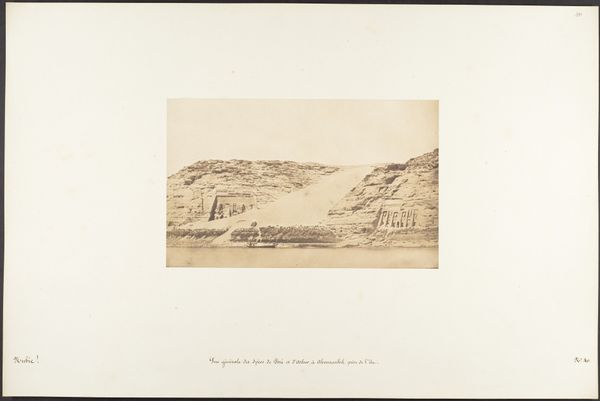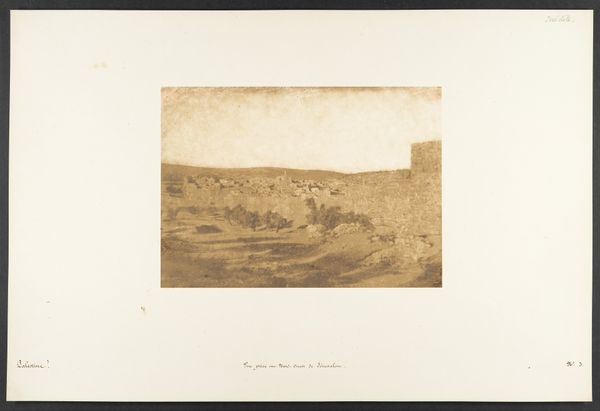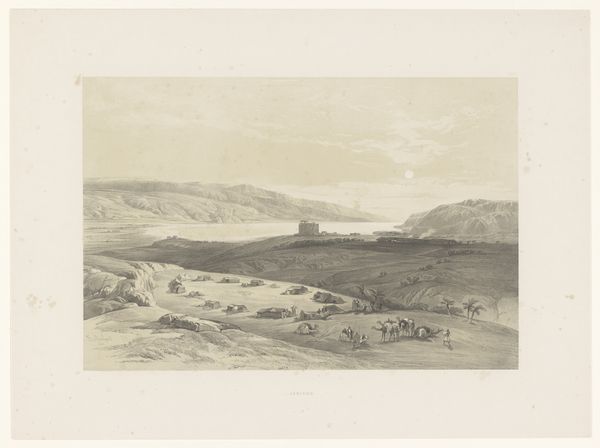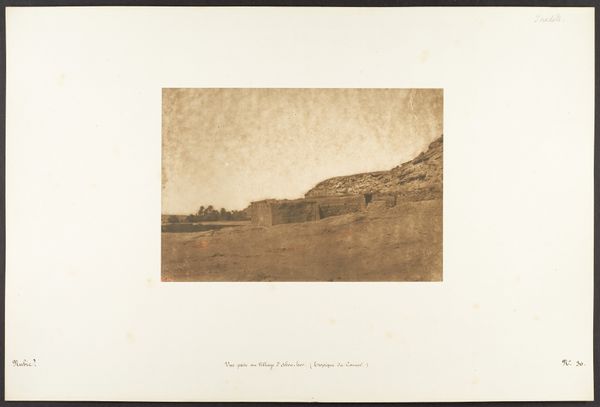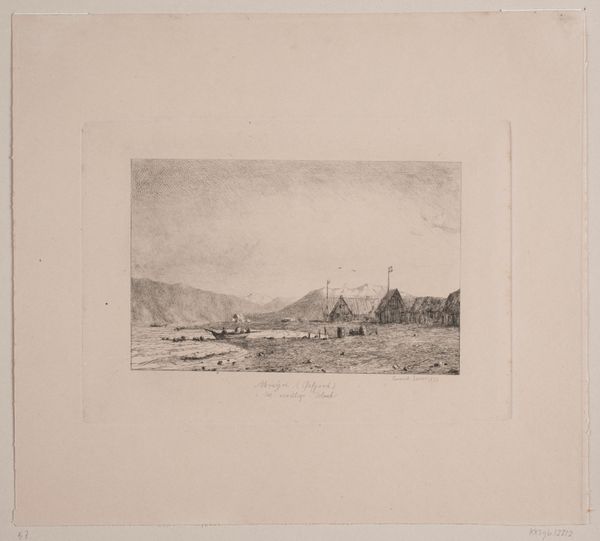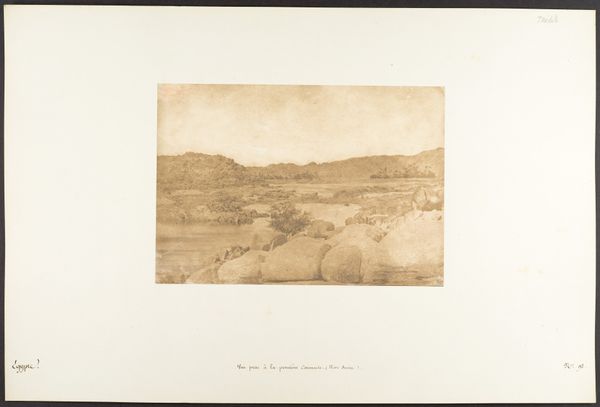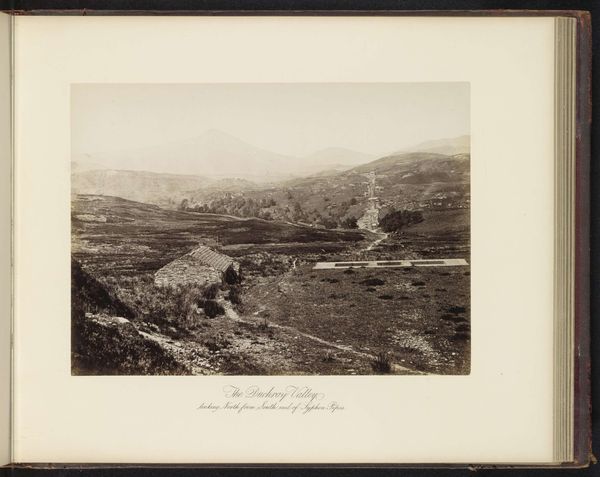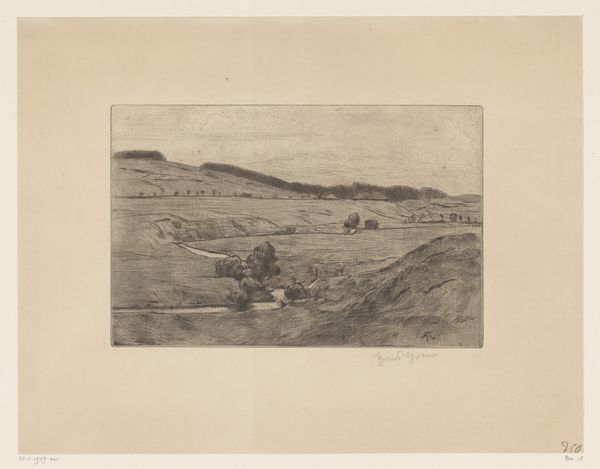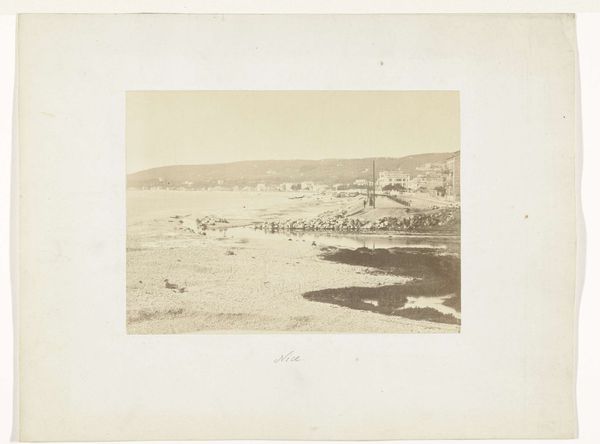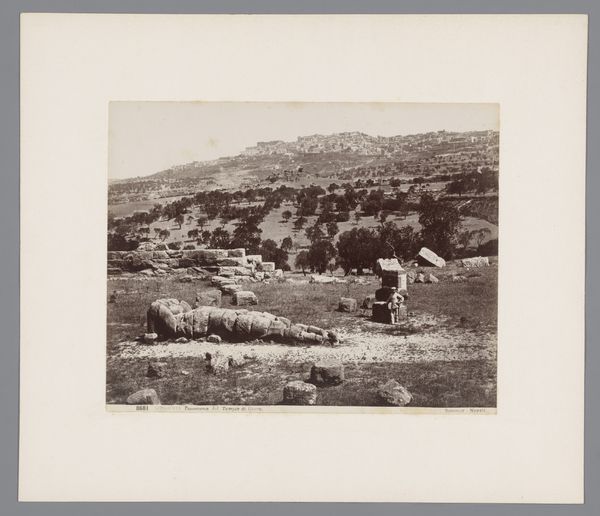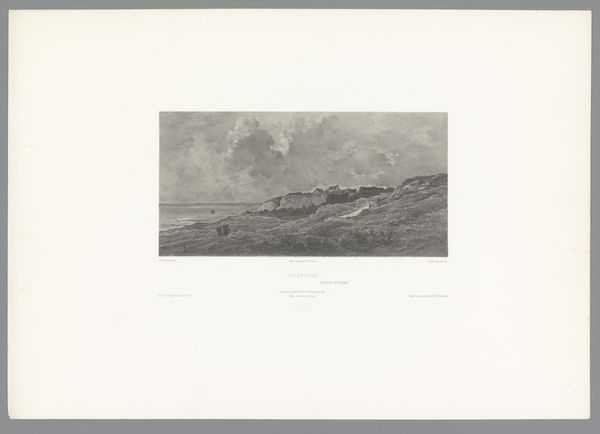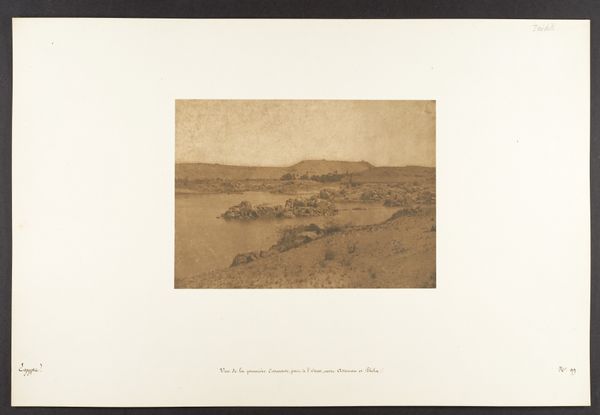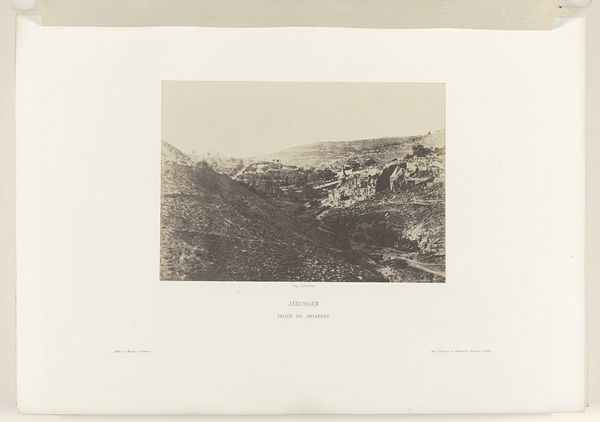
print, photography, gelatin-silver-print
#
pale palette
# print
#
landscape
#
ancient-egyptian-art
#
photography
#
ancient-mediterranean
#
gelatin-silver-print
Dimensions: Image: 6 5/16 × 8 9/16 in. (16 × 21.7 cm) Mount: 12 5/16 × 18 11/16 in. (31.2 × 47.5 cm)
Copyright: Public Domain
Editor: This gelatin silver print, titled "Ancienne Nécropole de Lycopolis, à Syout," was created by Maxime Du Camp around 1850. It has such a stark and desolate feel to it. What do you see in this piece? Curator: I see a landscape fraught with the complicated politics of representation and history. Early photography like this, particularly depictions of non-European sites, were often entangled with colonial narratives. This image isn’t just a depiction of a necropolis; it's also a document that reflects the power dynamics of the time, framing Egypt through a Western lens. Editor: How so? Curator: Consider the context: French photographers like Du Camp were accompanying writers like Flaubert. They brought a European gaze to these ancient sites, arguably "claiming" them through documentation. Think about who controls the narrative, whose story is being told, and for what purpose. The "discovery" and visual recording of these sites became part of the colonial project. What are your thoughts on the lack of people in this image? Editor: It’s as if the landscape is emptied of its present inhabitants. That could emphasize a sense of timelessness, but I see how it could also reinforce a colonial perspective, suggesting an absence, ready to be filled by others. Curator: Exactly! We must remember to consider how visual culture participated in larger imperial projects. Thinking critically about these images allows us to unravel these layers of meaning and challenge dominant narratives. Does the silence in this image take on new meaning in that light? Editor: Definitely. It’s a good reminder that even seemingly objective documents like photographs are imbued with cultural and political baggage. I never thought about early photography this way!
Comments
No comments
Be the first to comment and join the conversation on the ultimate creative platform.
